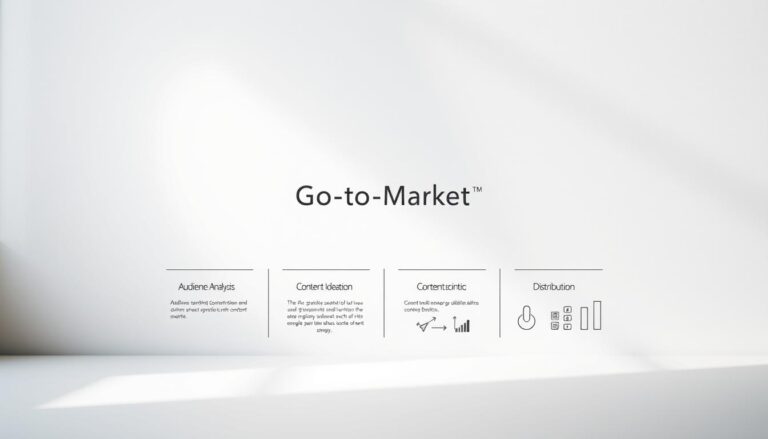Modern sales environments require strategies that outpace manual workflows. Intelligent automation solutions now empower teams to scale personalized outreach without sacrificing quality. By merging human expertise with precision-driven tools, organizations achieve measurable growth while maintaining authentic client relationships.
The shift from labor-intensive prospecting to streamlined systems marks a critical evolution in sales methodologies. Advanced platforms analyze buyer behavior patterns, enabling teams to prioritize high-potential leads efficiently. This approach doesn’t replace human intuition but amplifies it – sales professionals gain more time for strategic negotiations and value-driven conversations.
Data-driven automations create competitive advantages by optimizing resource allocation. When repetitive tasks like email sequencing or CRM updates become systematized, revenue-generating activities take center stage. Organizations adopting these solutions typically see 30-50% faster pipeline progression compared to traditional methods.
Key Takeaways
- Automation scales personalized outreach without compromising quality
- Data-driven tools enhance lead prioritization and conversion rates
- Hybrid approaches balance technology with human relationship-building
- Streamlined workflows free teams for high-impact sales activities
- Strategic implementation drives measurable revenue growth
Introduction: The Power of Go To Market Automations for Sales Success
Sales and marketing landscapes have transformed into precision-driven ecosystems. Traditional methods struggle to meet buyer expectations for hyper-relevant engagement. This shift demands tools that amplify human capabilities while handling repetitive workflows.
The Evolution of Sales and Marketing Strategies
Manual outreach once demonstrated care but now risks irrelevance. Buyers receive 126 trillion B2B emails annually, creating fierce competition for attention. Integrated platforms analyze behavioral patterns to deliver messages that cut through noise.
Modern strategies blend artificial intelligence with human oversight. Predictive analytics identify high-value prospects, while automated sequences maintain consistent touchpoints. This hybrid approach lets teams focus on crafting tailored solutions rather than administrative tasks.
Key Benefits for Modern GTM Teams
Automation recovers 520 hours annually per employee—equivalent to 2.1 workweeks—according to Zapier’s 2023 research. Three critical advantages emerge:
- Precision targeting using real-time data insights
- Scalable personalization across multiple channels
- Faster response times to buyer signals
These capabilities transform raw information into strategic assets. Teams allocate saved time to complex negotiations and relationship nurturing, driving measurable revenue growth without sacrificing personal connections.
Understanding Go To Market Automations
Strategic deployment of intelligent systems reshapes how businesses approach customer acquisition. These solutions manage end-to-end processes with surgical precision, turning raw data into actionable roadmaps for revenue teams.

How Automation Accelerates Market Entry
Sophisticated platforms merge competitive intelligence with customer behavior analysis. One enterprise software provider reduced research time by 68% using automated trend detection tools. “The right systems transform months of manual work into days of strategic action,” notes a GTM operations lead at a Fortune 500 firm.
Three critical capabilities define modern solutions:
- Real-time demographic mapping using AI-driven data aggregation
- Dynamic workflow builders that adapt to regional market conditions
- Predictive analytics for identifying untapped opportunities
These tools enable teams to launch campaigns 3x faster than traditional methods. By automating repetitive tasks like lead scoring and competitor benchmarking, organizations allocate more resources to creative problem-solving. The result? Consistent market penetration without sacrificing personalization.
Advanced platforms now feature self-optimizing processes that learn from campaign performance. This continuous improvement cycle ensures strategies evolve alongside shifting consumer preferences – a necessity in today’s fast-paced commercial landscape.
Curated Product Roundup: Essential Tools Shaping GTM Success
Cutting-edge platforms redefine competitive advantage through specialized capabilities. Three industry leaders demonstrate how tailored solutions address distinct operational needs while driving measurable outcomes.
Platform Differentiation Through Strategic Features
Cognism’s Diamond Data® delivers phone-verified mobile contacts across 100+ countries, combining compliance assurance with real-time accuracy. This product helps teams navigate global privacy regulations while maintaining 92% data freshness rates.
| Platform | Key Features | Ideal For |
|---|---|---|
| Cognism | GDPR/CCPA-compliant international contacts | Global expansion teams |
| HubSpot | Unified campaign management | Mid-market organizations |
| Salesforce | AI-driven workflow automation | Enterprise-scale operations |
HubSpot excels in unifying marketing efforts through automated email sequences and social campaign coordination. Its drag-and-drop interface enables non-technical users to build sophisticated nurture tracks in minutes.
Real-World Impact Through User Adoption
Enterprise users report 47% faster lead conversion after implementing Salesforce’s Process Builder. One tech firm achieved $2.8M in pipeline growth within 90 days by combining AI scoring with automated task routing.
Customer feedback emphasizes integration flexibility as a critical success factor. “Blending Cognism’s data with HubSpot’s automation cut our prospecting time by half,” notes a SaaS sales director. This hybrid approach allows teams to maintain personalized outreach at scale.
Successful implementations often involve layered solutions. Marketing teams using HubSpot alongside Salesforce experience 68% higher email response rates through synchronized data flows and behavioral triggers.
Enhancing GTM Strategy with Marketing and Automation Integration
Forward-thinking organizations now merge cross-functional teams through unified platforms that break down operational silos. Marketing automation serves as the connective tissue between departments, creating a synchronized approach to customer engagement. Platforms like Marketo demonstrate this by delivering personalized website content based on real-time company data, while Demandbase specializes in account-based strategies that align sales and marketing priorities.

Aligning Sales, Marketing, and Customer Engagement
Modern gtm strategy thrives when teams share unified dashboards tracking prospect interactions across email, ads, and events. One enterprise using Marketo reduced campaign setup time by 40% while increasing lead quality. “Automated workflows let us deliver hyper-relevant messaging at every stage,” explains a tech CMO interviewed for strategic automation frameworks.
Three critical alignment benefits emerge:
- Shared visibility into which marketing campaigns drive pipeline growth
- AI-driven lead routing based on engagement patterns
- Dynamic content adjustments across channels
Demandbase users report 35% faster deal closures through coordinated account targeting. Sales teams receive real-time alerts when key accounts engage with content, enabling timely follow-ups. This synergy transforms isolated efforts into revenue-driving engines while maintaining authentic customer relationships.
Effective integration requires more than software – it demands cultural shifts. Teams adopting these tools often restructure KPIs to reward collaborative outcomes rather than departmental metrics. The result? Campaigns that resonate deeper and pipelines that convert faster.
Integration and Scalability: Building a Robust GTM Tech Stack
Successful revenue engines rely on interconnected systems that adapt as opportunities emerge. The right tech stack acts as a force multiplier, synchronizing data streams while preserving operational agility. Centralized platforms now enable teams to automate repetitive tasks while maintaining visibility across departments.
Seamless Software Integrations and Workflow Automation
Leading platforms like Zapier bridge gaps between CRM systems and marketing tools through 5,000+ app connections. One logistics company automated 89% of lead routing tasks using custom Zaps, freeing staff for complex client negotiations. Three integration essentials define modern solutions:
| Integration Type | Business Impact | Key Providers |
|---|---|---|
| CRM Sync | Real-time lead updates | Salesforce, HubSpot |
| Data Enrichment | Enhanced targeting accuracy | Clearbit, ZoomInfo |
| Cross-Platform Automation | Reduced manual workflows | Zapier, Make |
Balancing Flexibility and Scalability
Adaptable tech stacks grow with organizational needs without requiring complete rebuilds. Choose platforms offering modular architectures – 74% of scaling businesses prioritize API-first solutions according to G2 research. Effective systems eliminate data silos while allowing custom rule configurations for regional teams.
Vendor partnerships prove critical for long-term success. Providers with detailed documentation and sandbox environments enable GTM teams to test integrations before full deployment. This approach reduces implementation risks while ensuring workflows align with evolving market demands.
Data-Driven Decisions: Leveraging Analytics for Smarter Outreach
Business intelligence now drives revenue growth through precision engagement. Modern teams convert raw information into strategic assets using platforms like HockeyStack, which integrates with existing tools to analyze cross-channel performance. “Which campaigns generate enterprise-ready leads?” becomes a simple natural language query rather than a technical challenge.
Transforming Raw Numbers into Revenue
Advanced analytics tools eliminate guesswork in outreach strategies. HockeyStack’s AI interface answers complex questions about pipeline contributors, while Dreamdata maps how prospects interact with content across stages. These platforms reveal hidden patterns in customer behavior – like which webinar topics convert fastest or which email CTAs resonate with executives.
| Platform | Key Feature | Business Impact |
|---|---|---|
| HockeyStack | Natural language revenue queries | 68% faster insights |
| Dreamdata | Journey mapping | 41% higher lead quality |
| Tableau | Real-time dashboards | 55% quicker adjustments |
Predictive analytics identify optimal outreach timing through historical performance data. Teams discover decision-makers open emails 22% more often on Tuesday mornings, or that LinkedIn messages outperform emails for SaaS sales. These insights let reps focus on high-probability engagements.
Real-time dashboards track campaign metrics across channels. When response rates dip in specific regions, teams pivot messaging instantly. This agility separates stagnant pipelines from consistent performers – one fintech company boosted conversions 37% by acting on live analytics insights.
Future Trends in Go To Market Automations
Emerging technologies are redefining how organizations approach customer acquisition and retention. Next-generation tools combine intuitive design with advanced capabilities, enabling teams to adapt faster than ever. Three developments stand out: intelligent systems that learn from user behavior, accessible interfaces that democratize workflow creation, and ethical frameworks that align with shifting consumer values.
Embracing AI, Machine Learning, and No-Code Solutions
No-code platforms now let marketing specialists build complex campaigns without coding. A 2024 Forrester study shows 61% of GTM teams use these tools to reduce IT dependencies. Key advancements include:
| Feature | Business Impact | Adoption Rate |
|---|---|---|
| AI-driven personalization | 34% higher conversion rates | 48% of enterprises |
| Self-optimizing workflows | 29% faster campaign adjustments | 52% scaling businesses |
| Visual automation builders | 73% shorter training time | 68% mid-market firms |
Machine learning algorithms analyze customer journeys across channels, predicting optimal engagement moments. “Systems now identify decision-makers 12 days faster than manual methods,” notes a SaaS product director interviewed for Gartner’s automation report.
Preparing for Evolving Customer Expectations
Buyers demand tailored experiences without invasive data practices. Leading platforms address this through:
- Granular consent management tools
- Real-time content adaptation based on behavior
- Automated follow-ups with human-esque timing
Ethical AI frameworks help maintain trust while scaling outreach. One fintech company increased lead quality by 41% using bias-detection features in their automation stack. The future belongs to solutions that balance efficiency with genuine relationship-building.
Conclusion
Businesses face a pivotal choice: adapt through intelligent systems or risk stagnation. Workflow automation has transitioned from optional upgrade to core operational requirement. Modern GTM teams require platforms that align with their unique sales cycles and customer expectations, not generic solutions.
Selecting the right strategy demands thorough evaluation of current tech infrastructure and growth targets. The ideal solution integrates seamlessly with existing tools while providing scalable workflows. This approach transforms raw data into revenue-driving actions without compromising personalized engagement.
Leading organizations combine specialized platforms rather than relying on single systems. This layered method addresses specific sales challenges while maintaining flexibility. Explore proven automation frameworks that adapt as market dynamics shift.
The result? Sales teams achieve measurable pipeline acceleration through coordinated efforts. By balancing technological precision with human expertise, businesses secure sustainable revenue growth in competitive landscapes.
FAQ
How do GTM automations improve customer acquisition timelines?
By automating lead scoring, outreach sequences, and campaign management, teams reduce manual tasks and accelerate pipeline velocity. Platforms like HubSpot and Outreach.io enable real-time lead routing while tracking engagement patterns to prioritize high-intent prospects.
What core features define top-tier GTM automation platforms?
Leading solutions like Salesforce Pardot and Marketo offer AI-driven lead nurturing, CRM integrations, and multi-channel campaign tracking. Advanced tools include predictive analytics for forecasting and dynamic content personalization based on user behavior.
Can GTM automations integrate with legacy sales systems?
Yes. Most modern platforms provide API access and pre-built connectors for tools like SAP, Microsoft Dynamics, or Zendesk. Workato and Zapier further simplify integration for custom workflows between marketing automation and existing tech stacks.
How does automation enhance cross-team alignment in GTM strategies?
Shared dashboards in tools like Clari and Chili Piper synchronize sales/marketing metrics, ensuring consistent messaging. Automated alerts notify teams about lead status changes, while centralized deal rooms in platforms like DealHub maintain stakeholder visibility.
What analytics capabilities are critical for optimizing outreach?
Platforms must track email open rates, content engagement heatmaps, and social media conversion paths. Looker and Tableau integrations enable granular analysis of campaign ROI, while tools like Gong.io analyze sales call patterns to refine pitches.
How are AI features transforming GTM automation workflows?
AI now powers predictive lead scoring in HubSpot, automated content generation via Jasper, and sentiment analysis in Drift. These features enable hyper-personalized outreach at scale while reducing repetitive tasks for sales teams.
What security considerations apply to GTM automation tools?
Enterprise platforms like Salesforce prioritize SOC 2 compliance, GDPR-ready data handling, and granular user permissions. Always verify encryption standards and audit trails—especially when handling sensitive customer data across regions.



